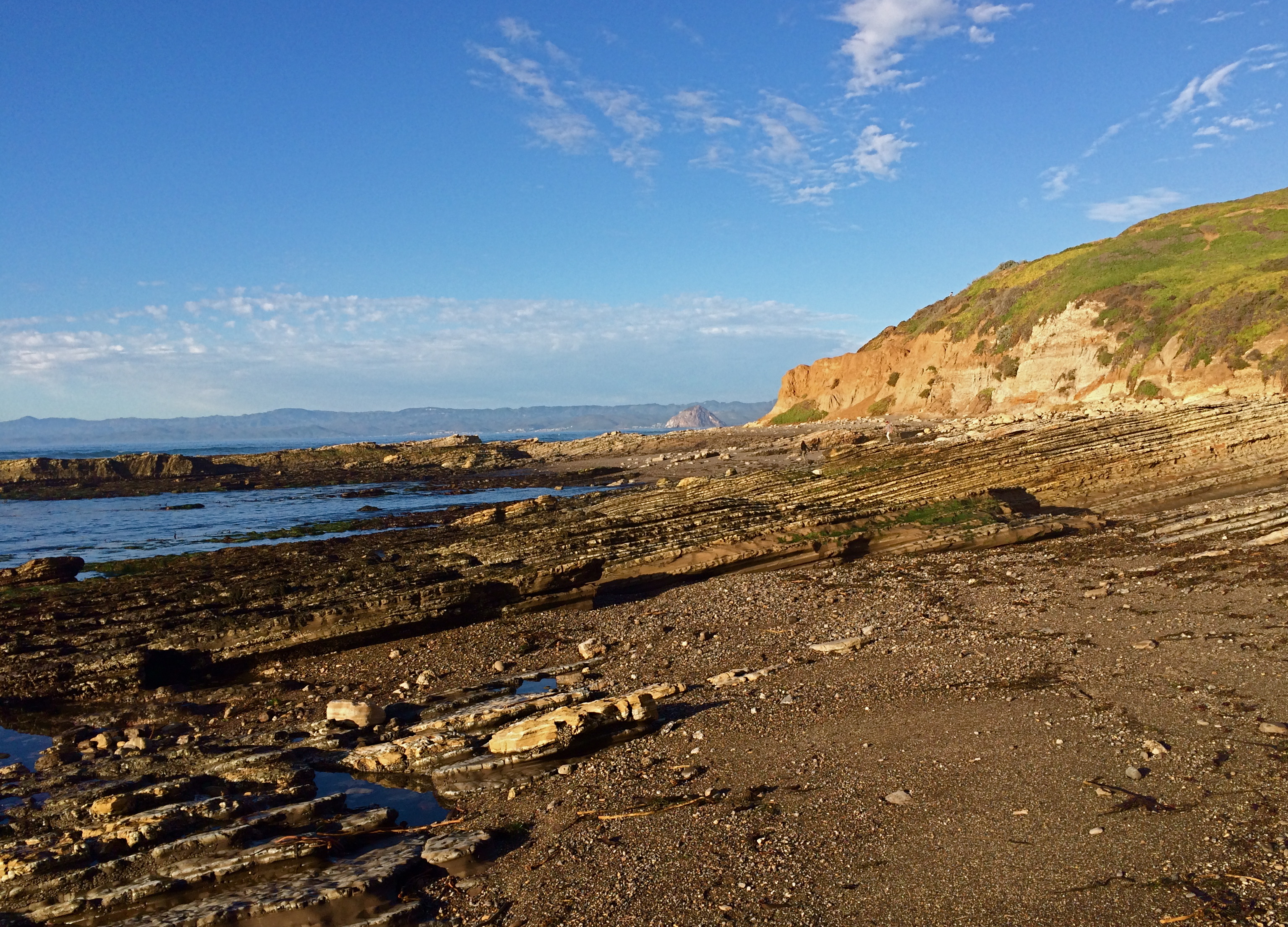|
Oxnard Oil Field
The Oxnard Oil Field is a large and currently productive oil field in and adjacent to the city of Oxnard, in Ventura County, California in the United States. Its conventional oil reserves are close to exhaustion, with only an estimated one percent of the original oil recoverable with current technology remaining: out of an original 43.5 million. However, the reservoir includes an enormous deposit of tar sands, ultra-heavy oil classed as an unconventional petroleum reserve, and potentially containing of oil equivalent, should it become economically feasible to extract. p. 6-8 Present operators on the field include Tri-Valley Oil & Gas Co., Anterra Energy Services, Inc., Chase Production Co., and Occidental Petroleum through its Vintage Production subsidiary. p. 97, 122, 118, 160 As of the beginning of 2009, there were 34 active wells on the field. Geographic setting The Oxnard Oil Field is one of several beneath the Oxnard Plain, an area mostly protected agricultural land ... [...More Info...] [...Related Items...] OR: [Wikipedia] [Google] [Baidu] |
Depression (geology)
In geology, a depression is a landform sunken or depressed below the surrounding area. Depressions form by various mechanisms. Types Erosion-related: * Blowout: a depression created by wind erosion typically in either a partially vegetated sand dune ecosystem or dry soils (such as a post-glacial loess environment). * Glacial valley: a depression carved by erosion by a glacier. * River valley: a depression carved by fluvial erosion by a river. * Area of subsidence caused by the collapse of an underlying structure, such as sinkholes in karst terrain. * Sink: an endorheic depression generally containing a persistent or intermittent (seasonal) lake, a salt flat (playa) or dry lake, or an ephemeral lake. * Panhole: a shallow depression or basin eroded into flat or gently sloping, cohesive rock.Twidale, C.R., and Bourne, J.A., 2018Rock basins (gnammas) revisited.''Géomorphologie: Relief, Processus, Environnement,'' Vol. 24, No. 2. January 2018. Retrieved 9 June 2020. Coll ... [...More Info...] [...Related Items...] OR: [Wikipedia] [Google] [Baidu] |
Conejo Formation
The Conejo Formation ( es, Formación Conejo, K2C, Kscn) is a fossiliferous geological formation of the Altiplano Cundiboyacense, Eastern Ranges of the Colombian Andes. The uppermost unit of the Villeta Group, a sequence of shales and sandstones dates to the Late Cretaceous period; Turonian, Coniacian and Santonian epochs, and has a maximum thickness of . Etymology The formation was named in 1967 and published in 1981 by Renzoni, named after El Conejo Hill in Pontezuela, Toca, Boyacá, west of the Copa Reservoir.Montoya & Reyes, 2005, p.29 Description Lithologies The Conejo Formation is characterised by a sequence of calcareous sandstones, containing ammonites, shales and the uppermost part sandstone and limestone banks.Montoya & Reyes, 2005, p.30 In the Conejo Formation, fossils of '' Protopholoe colombiana'', '' Archaeglobigerina blowi'', '' Dicarinella concavata'', '' Dicarinella primitiva'', '' Sigalitruncana sigali'', '' Marginotruncana sp. ct. M. renzi'', '' Marginotru ... [...More Info...] [...Related Items...] OR: [Wikipedia] [Google] [Baidu] |
Miocene
The Miocene ( ) is the first geological epoch of the Neogene Period and extends from about (Ma). The Miocene was named by Scottish geologist Charles Lyell; the name comes from the Greek words (', "less") and (', "new") and means "less recent" because it has 18% fewer modern marine invertebrates than the Pliocene has. The Miocene is preceded by the Oligocene and is followed by the Pliocene. As Earth went from the Oligocene through the Miocene and into the Pliocene, the climate slowly cooled towards a series of ice ages. The Miocene boundaries are not marked by a single distinct global event but consist rather of regionally defined boundaries between the warmer Oligocene and the cooler Pliocene Epoch. During the Early Miocene, the Arabian Peninsula collided with Eurasia, severing the connection between the Mediterranean and Indian Ocean, and allowing a faunal interchange to occur between Eurasia and Africa, including the dispersal of proboscideans into Eurasia. During the ... [...More Info...] [...Related Items...] OR: [Wikipedia] [Google] [Baidu] |
Monterey Formation
The Monterey Formation is an extensive Miocene oil-rich geological sedimentary formation in California, with outcrops of the formation in parts of the California Coast Ranges, Peninsular Ranges, and on some of California's off-shore islands. The type locality is near the city of Monterey, California. The Monterey Formation is the major source-rock for 37 to 38 billion barrels of oil in conventional traps such as sandstones. This is most of California's known oil resources. The Monterey has been extensively investigated and mapped for petroleum potential, and is of major importance for understanding the complex geological history of California. Its rocks are mostly highly siliceous strata that vary greatly in composition, stratigraphy, and tectono-stratigraphic history. The US Energy Information Administration (EIA) estimated in 2014 that the 1,750 square mile Monterey Formation could, as an unconventional resource, yield about 600 million barrels of oil, from ... [...More Info...] [...Related Items...] OR: [Wikipedia] [Google] [Baidu] |
Tar Sand
Oil sands, tar sands, crude bitumen, or bituminous sands, are a type of unconventional petroleum deposit. Oil sands are either loose sands or partially consolidated sandstone containing a naturally occurring mixture of sand, clay, and water, soaked with bitumen, a dense and extremely viscous form of petroleum. Significant bitumen deposits are reported in Canada, Kazakhstan, Russia, and Venezuela. The estimated worldwide deposits of oil are more than ; the estimates include deposits that have not been discovered. Proven reserves of bitumen contain approximately 100 billion barrels, and total natural bitumen reserves are estimated at worldwide, of which , or 70.8%, are in Alberta, Canada. Crude bitumen is a thick, sticky form of crude oil, so viscous that it will not flow unless heated or diluted with lighter hydrocarbons such as light crude oil or natural-gas condensate. At room temperature, it is much like cold molasses. The Orinoco Belt in Venezuela is sometimes des ... [...More Info...] [...Related Items...] OR: [Wikipedia] [Google] [Baidu] |
Pico Formation
The Pico Formation is a Pliocene epoch stratigraphic unit and geologic formation in the greater Los Angeles Basin, the Santa Monica Mountains, and the Santa Susana Mountains, in Los Angeles County of Southern California. Geology It was formed during the Neogene period of the Cenozoic Era, and overlies the Repetto Formation.Blake, Gregg H. 1991. "Review of the Neogene biostratigraphy and stratigraphy of the Los Angeles Basin and implications for basin evolution," In: Biddle, Kevin T. (ed), "Active Margin Basins", AAPG Memoir 52, 319pp. Outcrops of the formation in Santa Monica Mountains National Recreation Area have produced fossil shark teeth from the Pliocene."Santa Monica Mountains National Recreation Area," Hunt, Santucci, and Kenworthy (2006); page 67. In addition to fossils, armored mud balls were found by Cartwright (1928) in possible fluvial or coastal deposits of the Pico Formation, though they were referred to as "pudding balls" in the article. Classification The und ... [...More Info...] [...Related Items...] OR: [Wikipedia] [Google] [Baidu] |
Santa Barbara Formation
Santa Claus, also known as Father Christmas, Saint Nicholas, Saint Nick, Kris Kringle, or simply Santa, is a legendary figure originating in Western Christian culture who is said to bring children gifts during the late evening and overnight hours on Christmas Eve of toys and candy or coal or nothing, depending on whether they are "naughty or nice". In the legend, he accomplishes this with the aid of Christmas elves, who make the toys in his workshop, often said to be at the North Pole, and flying reindeer who pull his sleigh through the air. The modern figure of Santa is based on folklore traditions surrounding Saint Nicholas, the English figure of Father Christmas and the Dutch figure of ''Sinterklaas''. Santa is generally depicted as a portly, jolly, white-bearded man, often with spectacles, wearing a red coat with white fur collar and cuffs, white-fur-cuffed red trousers, red hat with white fur, and black leather belt and boots, carrying a bag full of gifts for childr ... [...More Info...] [...Related Items...] OR: [Wikipedia] [Google] [Baidu] |
San Pedro Formation
The San Pedro Formation is a geologic formation in California. It preserves fossils. See also * List of fossiliferous stratigraphic units in California * Paleontology in California Paleontology in California refers to paleontologist research occurring within or conducted by people from the U.S. state of California. California contains rocks of almost every age from the Precambrian to the Recent. Precambrian fossils are pres ... References * Geologic formations of California {{California-geologic-formation-stub ... [...More Info...] [...Related Items...] OR: [Wikipedia] [Google] [Baidu] |
Pleistocene
The Pleistocene ( , often referred to as the ''Ice age'') is the geological Epoch (geology), epoch that lasted from about 2,580,000 to 11,700 years ago, spanning the Earth's most recent period of repeated glaciations. Before a change was finally confirmed in 2009 by the International Union of Geological Sciences, the cutoff of the Pleistocene and the preceding Pliocene was regarded as being 1.806 million years Before Present (BP). Publications from earlier years may use either definition of the period. The end of the Pleistocene corresponds with the end of the last glacial period and also with the end of the Paleolithic age used in archaeology. The name is a combination of Ancient Greek grc, label=none, πλεῖστος, pleīstos, most and grc, label=none, καινός, kainós (latinized as ), 'new'. At the end of the preceding Pliocene, the previously isolated North and South American continents were joined by the Isthmus of Panama, causing Great American Interchang ... [...More Info...] [...Related Items...] OR: [Wikipedia] [Google] [Baidu] |
Alluvium
Alluvium (from Latin ''alluvius'', from ''alluere'' 'to wash against') is loose clay, silt, sand, or gravel that has been deposited by running water in a stream bed, on a floodplain, in an alluvial fan or beach, or in similar settings. Alluvium is also sometimes called alluvial deposit. Alluvium is typically geologically young and is not consolidated into solid rock. Sediments deposited underwater, in seas, estuaries, lakes, or ponds, are not described as alluvium. Floodplain alluvium can be highly fertile, and supported some of the earliest human civilizations. Definitions The present consensus is that "alluvium" refers to loose sediments of all types deposited by running water in floodplains or in alluvial fans or related landforms. However, the meaning of the term has varied considerably since it was first defined in the French dictionary of Antoine Furetière, posthumously published in 1690. Drawing upon concepts from Roman law, Furetière defined ''alluvion'' (the F ... [...More Info...] [...Related Items...] OR: [Wikipedia] [Google] [Baidu] |
Stratigraphy
Stratigraphy is a branch of geology concerned with the study of rock (geology), rock layers (Stratum, strata) and layering (stratification). It is primarily used in the study of sedimentary rock, sedimentary and layered volcanic rocks. Stratigraphy has three related subfields: lithostratigraphy (lithologic stratigraphy), biostratigraphy (biologic stratigraphy), and chronostratigraphy (stratigraphy by age). Historical development Catholic priest Nicholas Steno established the theoretical basis for stratigraphy when he introduced the law of superposition, the principle of original horizontality and the principle of lateral continuity in a 1669 work on the fossilization of organic remains in layers of sediment. The first practical large-scale application of stratigraphy was by William Smith (geologist), William Smith in the 1790s and early 19th century. Known as the "Father of English geology", Smith recognized the significance of Stratum, strata or rock layering and the importance ... [...More Info...] [...Related Items...] OR: [Wikipedia] [Google] [Baidu] |







